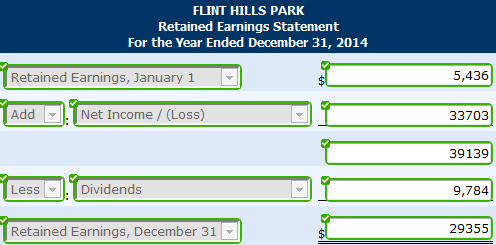Content

At one point, the business may require quick money to fix its operations. Accounts receivable financing can help businesses overcome those financial challenges. Marco Carbajo is a credit specialist and owner of Business Credit Insiders Circle. His expertise includes guiding businesses and start-ups in securing funding without putting personal assets at risk.
How do you record loan receivables?
- Debit account: The bank's accountant debits the amount in the customer's Loan account.
- Credit account: The bank credits the loan amount as loans receivable.
- Debit Account: You have to debit the loan amount received in your bank book.
Accounts receivable financing processing time is relatively short, approximately two weeks. When granted accounts receivable financing, a company receives the financing proceeds before its customers make their payments, which accelerates the company’s cash flow. In addition, the borrower can use the financing for a variety of purposes, including tax payments or additional inventory purchases to benefit from trade discounts. Unlike traditional financing options, which might require collateral in the form of capital assets, the security for accounts receivable financing is a company’s sales revenue. Equally important, the financing is not a loan and, therefore, does not affect a company’s financial ratios, such as the debt-to-equity ratio.
Alternatives in Venture Financing
Interest is determined separately for each unit, based on the actual amount originally paid by the lender and the period between the time the money is paid and the time the retailer reimburses the lender. For inventory financing to be feasible, the assets must be individually identifiable, usually by a serial number, so that an audit can verify the presence of unsold assets at the dealer’s place of business. A loan receivable is a financial asset of a government represented by a promise by a borrower to repay a specific amount, at a specified time or times, or on demand, usually with interest.
- Accounts receivable financing deals are usually structured as either asset sales or loans.
- A subsidiary ledger may be used to store the detail on each of the loans outstanding, where the ending balance in the subsidiary ledger matches the ending balance for the loans receivable account in the general ledger.
- When the loan is paid back, you still have the bike’s spare parts, which are your asset but will also depreciate with time.
- Agencies should also contact DOB to begin the formal contracting process.
Only the interest portion on a loan payment is considered to be an expense. The principal paid is a reduction of a company’s “loans payable”, and will be reported by management as cash outflow on the Statement of Cash Flow. Billie Nordmeyer works as a consultant advising small businesses and Fortune 500 companies on performance improvement initiatives, as well as SAP software selection and implementation. During her career, she has published business and technology-based articles and texts. Nordmeyer holds a Bachelor of Science in accounting, a Master of Arts in international management and a Master of Business Administration in finance.
Asset-Based Lending
A company uses a working capital loan – also called a merchant advance — to pay short-term obligations, such as payroll and vendor accounts payable. To grant the loan, the lender often requires collateral that might include business assets, such as accounts receivable; business real estate; or financial assets, such as a certificate of deposit. In exchange, the borrower receives either a line of credit against which it borrows cash as the need arises or the proceeds of a traditional loan. The terms of the financing, including duration and interest percentage, depend on factors such as the loan amount, the company’s annual sales revenue and the borrower’s credit history. A company’s cash flow is not just a gauge of its well-being; it’s also a means to accomplish a number of business goals.
The loans that are calculated as part of loans receivables may be made to an organization or to an individual, depending on the type of loan. In the case of individuals, the loans receivable may be in the form of a line of credit that the bank or financial institution has opened on behalf of the client. Such finances have periods within which they must be repaid, all of which will be calculated as part of the loans receivables.
What Is Loans Receivable?
The basis adjustment is maintained on the closed portfolio of assets and therefore adjusts the carrying amount of the balance sheet line item in which the closed portfolio of assets is presented. Stay informed with our biweekly resource for recent financial reporting developments, including AICPA, SEC, PCAOB matters and other finance and accounting compliance considerations. Since it is an outright sale of receivables, the borrower is no longer responsible for the collection process, and the amounts are collected by the factoring organization. Factoring can be expensive, as it typically involves several fees alongside interest expense.
A seller can approach a forfaiter before the seller finalizes the transaction’s structure and then incorporate the price of forfaiting into the selling price. The seller contracts with the buyer and accepts a commitment from the forfaiter. The forfaiter might require that the seller obtain a guarantee from the buyer’s bank running in favor of the forfeiter. If such an arrangement is put in place, the seller delivers the goods to the buyer and delivers the pertinent documents to the forfaiter, who then pays for the goods.
Which method should you go with?
We hope this helps you when deciding whether or not to finance your startup through an accounts receivable based loan. If you have an old-fashioned accounts receivable based loan where you have an invoice you can factor with a bank, it is going to be much cheaper than some of the alternative marketplaces currently popping up. That said, Kruze Consulting supports all types of financial innovations that help startups pull cash forward and reinvest in their customer acquisition or development as a means to enhance their product. Either way, make sure you have a good CPA firm, like Kruze Consulting, who will calculate the accurate effective interest rate for your startup otherwise you may be surprised at how high your rate ends up. Kruze Consulting sees banks such as Silicon Valley Bank, Bridge Bank, Comerica, Pacific Western, et. However, it is worth spending a moment on the new breed of accounts receivable.

A recent innovation in accounts receivable financing is the social media-inspired, web-based business of matching firms wishing to sell receivables with firms wishing to supply funding over the Internet. Factoring companies take Loans receivable several elements into consideration when determining whether to onboard a company onto its factoring platform. Furthermore, the terms of each deal and how much is offered in relation to accounts receivable balances will vary.
Examples of Loans receivable in a sentence
Accounts receivable are the balance of money due to a firm for goods or services delivered or used but not yet paid for by customers. Reporting entities should base their determination of portfolio segments and classes on their business model and industry, https://business-accounting.net/ risk management practices, and how they manage their portfolios. A large company can securitize some or all of its receivables in a special purpose vehicle ; the instrument holds the receivables, collects payments, and passes them through to the investors.
The amount of financing receivables that defaulted, including the period-end amortized cost basis for financing receivables that defaulted. ○ the amount of financing receivables that defaulted, including the period-end amortized cost basis for financing receivables that defaulted.